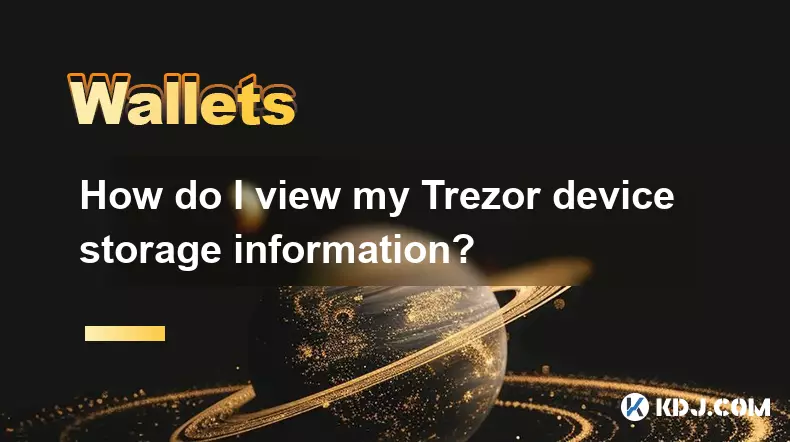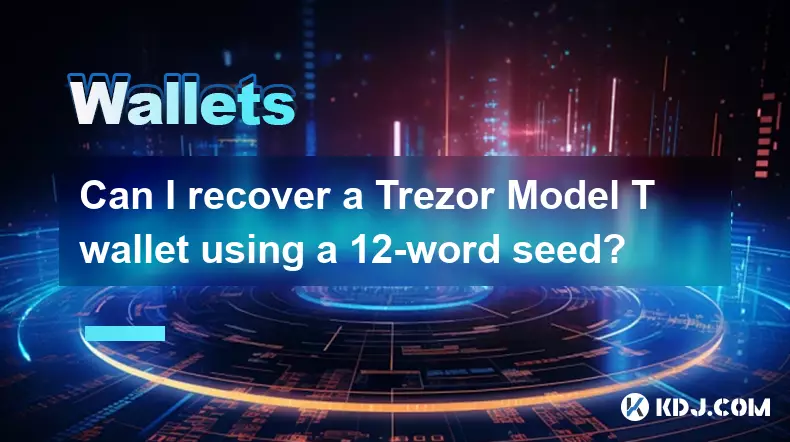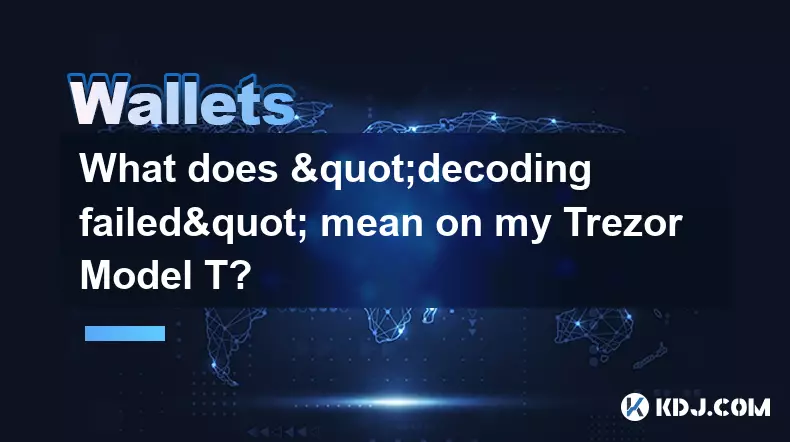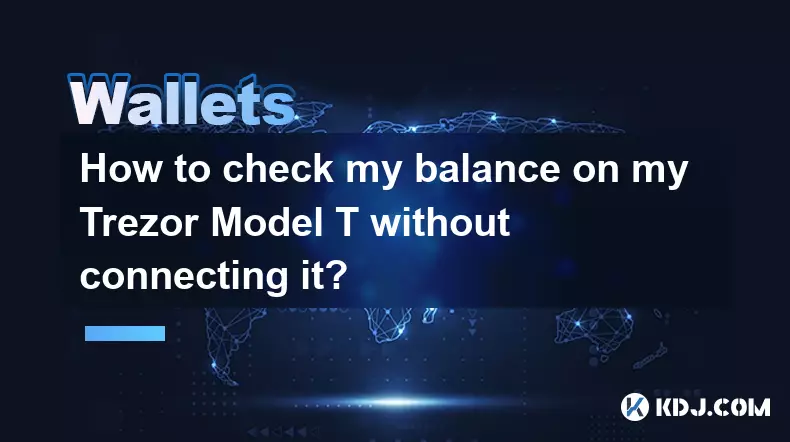-
 bitcoin
bitcoin $108309.944805 USD
-1.81% -
 ethereum
ethereum $3861.653445 USD
-2.57% -
 tether
tether $1.000476 USD
0.02% -
 bnb
bnb $1064.809647 USD
-3.07% -
 xrp
xrp $2.422923 USD
-2.29% -
 solana
solana $186.552328 USD
-0.93% -
 usd-coin
usd-coin $0.999917 USD
0.00% -
 tron
tron $0.322438 USD
-0.01% -
 dogecoin
dogecoin $0.194315 USD
-2.57% -
 cardano
cardano $0.642133 USD
-3.06% -
 chainlink
chainlink $17.657259 USD
-6.17% -
 hyperliquid
hyperliquid $35.120261 USD
-7.45% -
 ethena-usde
ethena-usde $0.999614 USD
0.03% -
 stellar
stellar $0.312748 USD
-3.27% -
 bitcoin-cash
bitcoin-cash $480.377391 USD
0.23%
How do I view my Trezor device storage information?
Trezor devices securely store cryptocurrency keys in a protected chip, not for file storage, with data accessible via Trezor Suite for wallet management and transaction signing.
Oct 13, 2025 at 09:18 am

Understanding Trezor Device Capabilities
1. Trezor devices are hardware wallets designed primarily for securing cryptocurrency private keys, not for general file storage like traditional USB drives.
- These devices do not have user-accessible storage in the conventional sense; they store cryptographic keys and wallet configurations within a secure element.
- The firmware handles all data related to wallet access, including PINs, passphrases (if used), and account metadata, but this information is encrypted and isolated.
- Users cannot browse or manage files on a Trezor as they would on a typical storage device because it operates as a dedicated security module.
- Any interaction with stored data occurs through compatible wallet interfaces such as Trezor Suite, which communicates securely with the device via signed transactions.
Accessing Wallet Data Through Trezor Suite
1. To view information tied to your Trezor, connect the device to your computer using the provided USB cable and navigate to https://suite.trezor.io.
- Once connected, Trezor Suite displays wallet balances, transaction history, and supported cryptocurrencies based on the accounts you’ve added.
- The interface retrieves blockchain data from online servers, not directly from the device’s internal memory, meaning what you see reflects network records linked to your public addresses.
- You can review account labels, derivation paths, and recovery seed status directly within the app, giving insight into how your keys are organized.
- While the device itself doesn’t expose raw storage details, Trezor Suite offers transparency about active accounts and their associated data without compromising security.
Checking Firmware and Device Status
1. Within Trezor Suite, go to the 'Settings' section to find real-time device information such as model type, firmware version, and serial number.
- This area also shows whether your device is passphrase-protected, if a backup was created, and if safety checks like auto-lock timers are enabled.
- Firmware updates are delivered through this interface, ensuring that the underlying software managing key storage remains current and secure.
- A health check feature verifies that no unauthorized changes have been made to the device's configuration since setup.
- Although these features don’t reveal storage capacity or file listings, they confirm the integrity of the environment where your cryptographic assets are managed.
Frequently Asked Questions
Can I see how much memory my Trezor uses?No. Trezor does not provide metrics on memory usage. It stores only essential cryptographic data, optimized to fit within its secure chip. Users do not need to monitor memory consumption as it is handled automatically by the firmware.
Is there a way to export data stored on my Trezor?The private keys themselves cannot be exported due to security design. However, you can back up your wallet using the 12- or 24-word recovery seed during initial setup. This seed allows restoration on any compatible device but should never be digitized or shared.
Does connecting my Trezor to third-party wallets affect its internal data?Connecting to external platforms like MetaMask or Electrum does not alter the data stored on the Trezor. These integrations use the device for signing operations only, keeping private keys isolated while enabling broader functionality across decentralized applications.
Disclaimer:info@kdj.com
The information provided is not trading advice. kdj.com does not assume any responsibility for any investments made based on the information provided in this article. Cryptocurrencies are highly volatile and it is highly recommended that you invest with caution after thorough research!
If you believe that the content used on this website infringes your copyright, please contact us immediately (info@kdj.com) and we will delete it promptly.
- XRP, BlockDAG, and Presale Surge: A Crypto Trifecta
- 2025-10-22 10:55:12
- XRP, Solana, BlockDAG: Decoding the Hottest Trends in Crypto
- 2025-10-22 10:30:12
- Undated 20p Coin: Could This Rare Coin in Your Pocket Be Worth £50?
- 2025-10-22 10:35:15
- Elon Musk, Floki, and the Crypto Market: A Meme Coin Rollercoaster
- 2025-10-22 10:50:12
- DOGE, ROI, and Crypto News: What's the Buzz?
- 2025-10-22 10:05:11
- Melania Trump, Crypto, and Allegations of Fraud: A Deep Dive
- 2025-10-22 10:55:12
Related knowledge

Can I recover a Trezor Model T wallet using a 12-word seed?
Oct 22,2025 at 12:37am
Understanding Trezor Model T and Seed Phrase Compatibility1. The Trezor Model T supports BIP39-based 12-word recovery seed phrases, allowing users to ...

What does "decoding failed" mean on my Trezor Model T?
Oct 21,2025 at 04:00am
Understanding 'Decoding Failed' on Trezor Model T1. The error message 'decoding failed' on a Trezor Model T typically appears during transaction signi...

Why is MetaMask not finding my Trezor Model T?
Oct 22,2025 at 05:00am
Understanding Wallet Connectivity Between MetaMask and Hardware Devices1. MetaMask is a software-based Ethereum wallet that supports integration with ...

How to set up a new wallet on an existing Trezor Model T?
Oct 20,2025 at 12:36am
Initializing a New Wallet on Your Trezor Model T1. Connect your Trezor Model T to your computer using the provided USB cable. Ensure that the device i...

How to check my balance on my Trezor Model T without connecting it?
Oct 20,2025 at 11:00pm
Understanding Trezor Model T and Wallet Functionality1. The Trezor Model T is a hardware wallet designed to store cryptocurrencies securely offline. I...

How to sign a transaction on a DeFi platform with Trezor Model T?
Oct 19,2025 at 05:00pm
Understanding the Role of Liquidity Pools in Decentralized Finance1. Liquidity pools are foundational components within decentralized exchanges (DEXs)...

Can I recover a Trezor Model T wallet using a 12-word seed?
Oct 22,2025 at 12:37am
Understanding Trezor Model T and Seed Phrase Compatibility1. The Trezor Model T supports BIP39-based 12-word recovery seed phrases, allowing users to ...

What does "decoding failed" mean on my Trezor Model T?
Oct 21,2025 at 04:00am
Understanding 'Decoding Failed' on Trezor Model T1. The error message 'decoding failed' on a Trezor Model T typically appears during transaction signi...

Why is MetaMask not finding my Trezor Model T?
Oct 22,2025 at 05:00am
Understanding Wallet Connectivity Between MetaMask and Hardware Devices1. MetaMask is a software-based Ethereum wallet that supports integration with ...

How to set up a new wallet on an existing Trezor Model T?
Oct 20,2025 at 12:36am
Initializing a New Wallet on Your Trezor Model T1. Connect your Trezor Model T to your computer using the provided USB cable. Ensure that the device i...

How to check my balance on my Trezor Model T without connecting it?
Oct 20,2025 at 11:00pm
Understanding Trezor Model T and Wallet Functionality1. The Trezor Model T is a hardware wallet designed to store cryptocurrencies securely offline. I...

How to sign a transaction on a DeFi platform with Trezor Model T?
Oct 19,2025 at 05:00pm
Understanding the Role of Liquidity Pools in Decentralized Finance1. Liquidity pools are foundational components within decentralized exchanges (DEXs)...
See all articles

























![dooMEd (Hard Demon) by MaxxoRMeN [1 Coin] | Geometry Dash dooMEd (Hard Demon) by MaxxoRMeN [1 Coin] | Geometry Dash](/uploads/2025/10/22/cryptocurrencies-news/videos/doomed-hard-demon-maxxormen-coin-geometry-dash/68f8029c3b212_image_500_375.webp)
















































